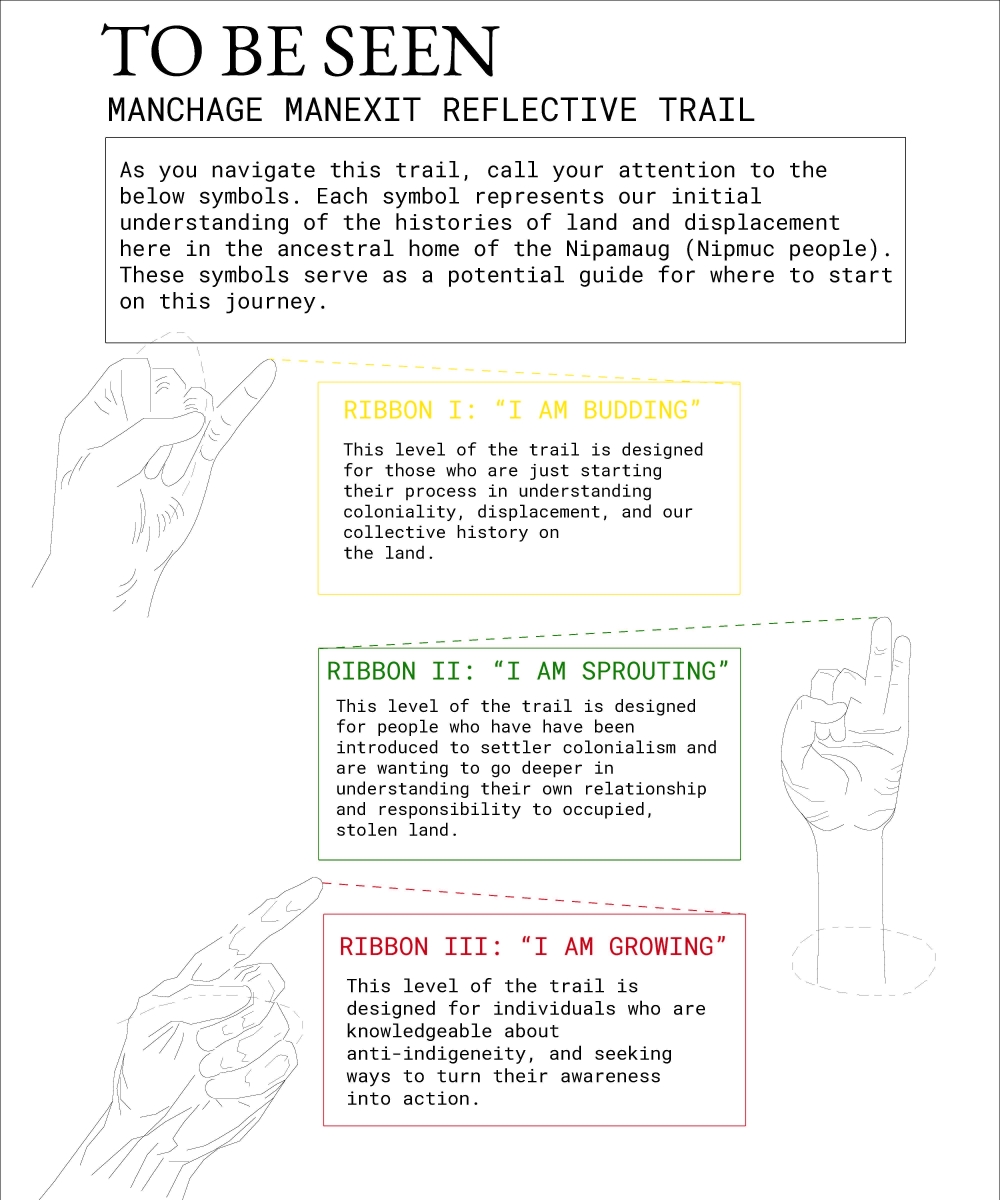You are here
To Be Seen: Manchage Manexit Reflective Trail
Honoring the presence of the original stewards of this land, the Manchage Manexit interpretive trail includes 13 powerfully insightful signs along a ½-mile trail that reflect Nipmuc language and ideas, symbols of eastern woodlands tribal knowledge systems, and questions that invite all visitors to reflect on the experiences of the land and of themselves, their intentions in visiting, and the ideas they will take back home.
Open to the public, the trail occupies the same space as an interpretive trail installed in the late 1990s, which focused on the colonial and post-colonial land use history.
The trail was created by Harvard students Tyler White (Graduate School of Design) and Kashish Bastola (Harvard College '26), with research and advising by Nia Holley (Nipmuc), and included input of dozens of Nipmuc community members, conservation practitioners, and Harvard University students before finalizing the design of the signs.
The project was funded by a 2022 grant from the Harvard Culture Lab Innovation Fund, in a proposal led by Shersingh Joseph Tumber-Dávila (a post-doctoral fellow at the time, now faculty at Dartmouth College) and Clarisse Hart. The implementation of the work would not have been possible without additional support from the Harvard Forest Woods Crew, for which we are grateful.
Introductory signs
These signs discuss the trail name, Manchage Manexit, and attributions mentioned above. "Manchage" means "place of departure / place of marveling" and Manexit" means "to gather them together." The second introductory sign notes that Harvard Forest sits on 4,000 acres of unceded Nipmuc land and asks the viewer to reflect on our relationship with contemporary land dispossession.
The third introductory panel, shown to the left, introduces three symbols that are used throughout the signs to share three levels of understanding and introspection. These symbols are as follows: "Ribbon I - I am budding" is symbolized by a hand closed with the pinky finger outstretched; "Ribbon II - I am sprouting" shows a hand with the two smallest fingers outstretched and the thumb closed over the pointer and index fingers; "Ribbon III - I am growing" shows a hand with all fingers closed except the index finger, which points assertively upward.
View all introductory sign images & text here
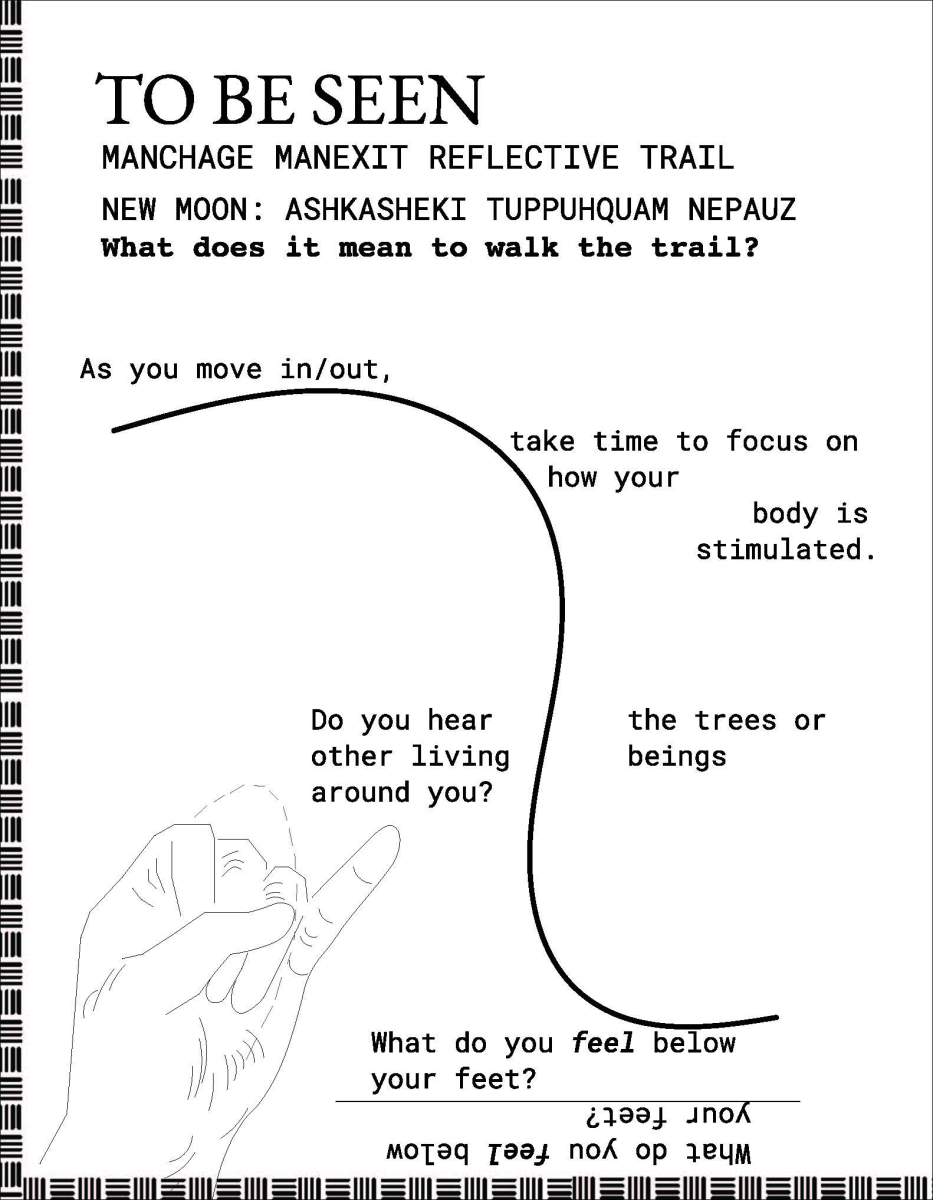 "What does it mean to walk the trail?"
"What does it mean to walk the trail?"
In this section, the three interpretive signs invite the viewer to consider their relationality to other beings in the vicinity, particularly the trees. The first of these (shown to the right) includes the I am budding symbol, and asks "Do you hear the trees or other living beings around you?" The panel with the I am sprouting symbol asks several deeper questions, such as "When did this place become known as 'forest'?"
Finally, the I am growing panel reminds visitors that "The land and everything on it is constantly in flux," with a series of questions prompting introspection on what the trees have seen and how change on the land is being suppressed.
View the three signs and full text of this segment here
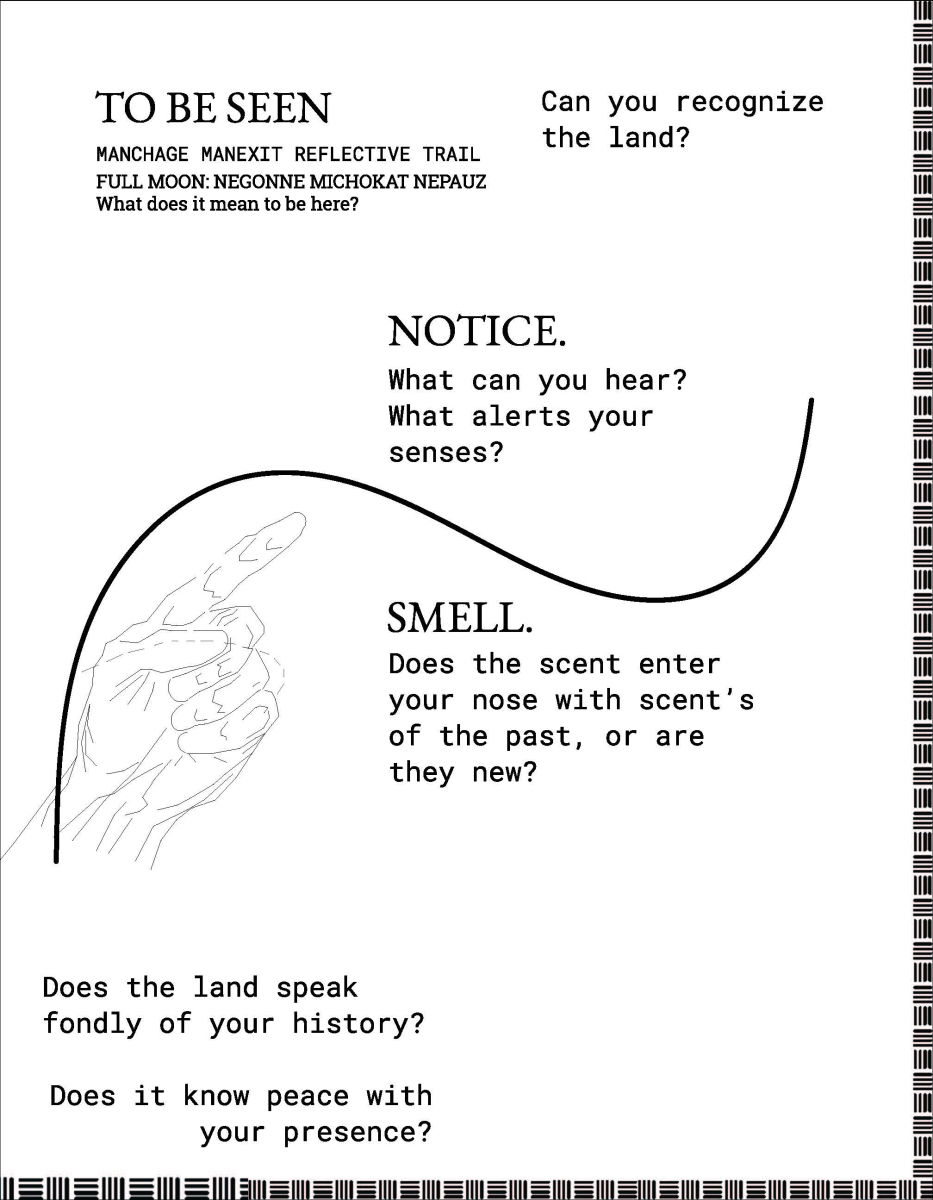 "What does it mean to be here?"
"What does it mean to be here?"
This portion of the trial invites reflection from the point of view of the trees, those have come before us, and the land itself. "Be the trees... What have they seen, lived through, experienced?" Like many of the signs, the panel with the I am budding symbol includes two phrases in the Nipmuc language: "Toh a quompi (when)?" and "Manunnussek" or "be patient." The panel with the I am sprouting symbol asks visitors to consider the presence of those before us. "Look below you. What does it mean to be a visitor?"
Inviting deeper reflection still, the I am growing panel summons the senses, finally asking: "Does the land speak fondly of your history? Does it know peace with your presence?"
View the three signs and full text of this segment here
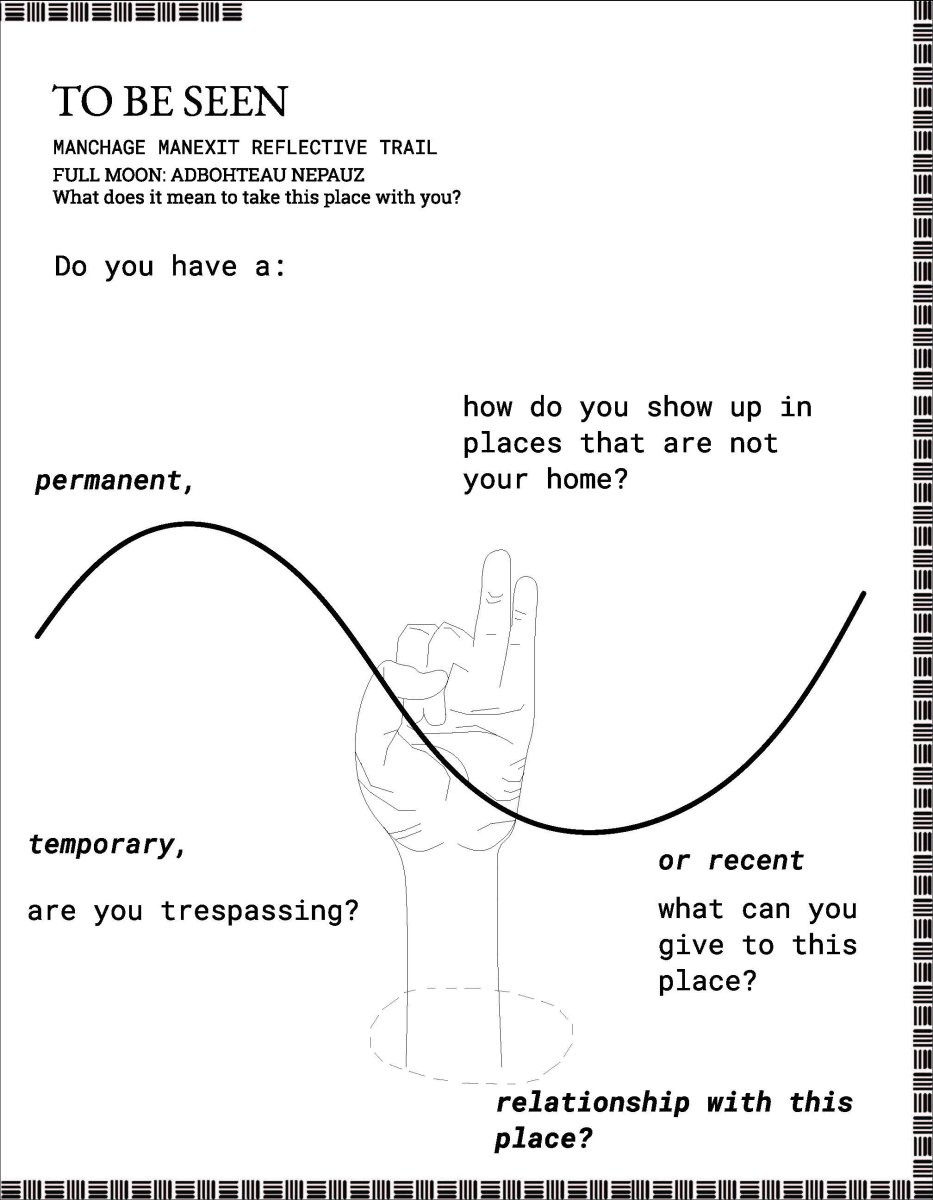 "What does it mean to take this place with you?"
"What does it mean to take this place with you?"
The final three signs facilitate a better understanding of how being a visitor versus being "home" informs our relationship with the land. Accompanied by the I am budding symbol, the first of these asks a series of questions, including: "Does this land know you? Do YOU know the land?" Relationality is summoned further in the I am sprouting sign, which powerfully asks: "how do you show up in places that are not your home?" Evoking empathy and the vision of a decolonized future, the final I am growing sign prompts us to consider what it means to live in harmony with a place.
View the three signs and full text of this segment here
"See you later: Kenauau chekeash"
With an identical pattern that depicts three repeating symbols - corn stalks, a turtle, and a shelter - the final two signs bid visitors farewell, first in English -- "See you later" -- and then in the Nipmuc language -- "Kenauau chekeash." Both signs include a small photograph of a Harvard Forest diorama that depicts land use during the colonial era. Meandering across the photograph and throughout each of these signs are thin lines that represent waterways throughout the region, reminding us of the Nipmuc identity as the freshwater people.
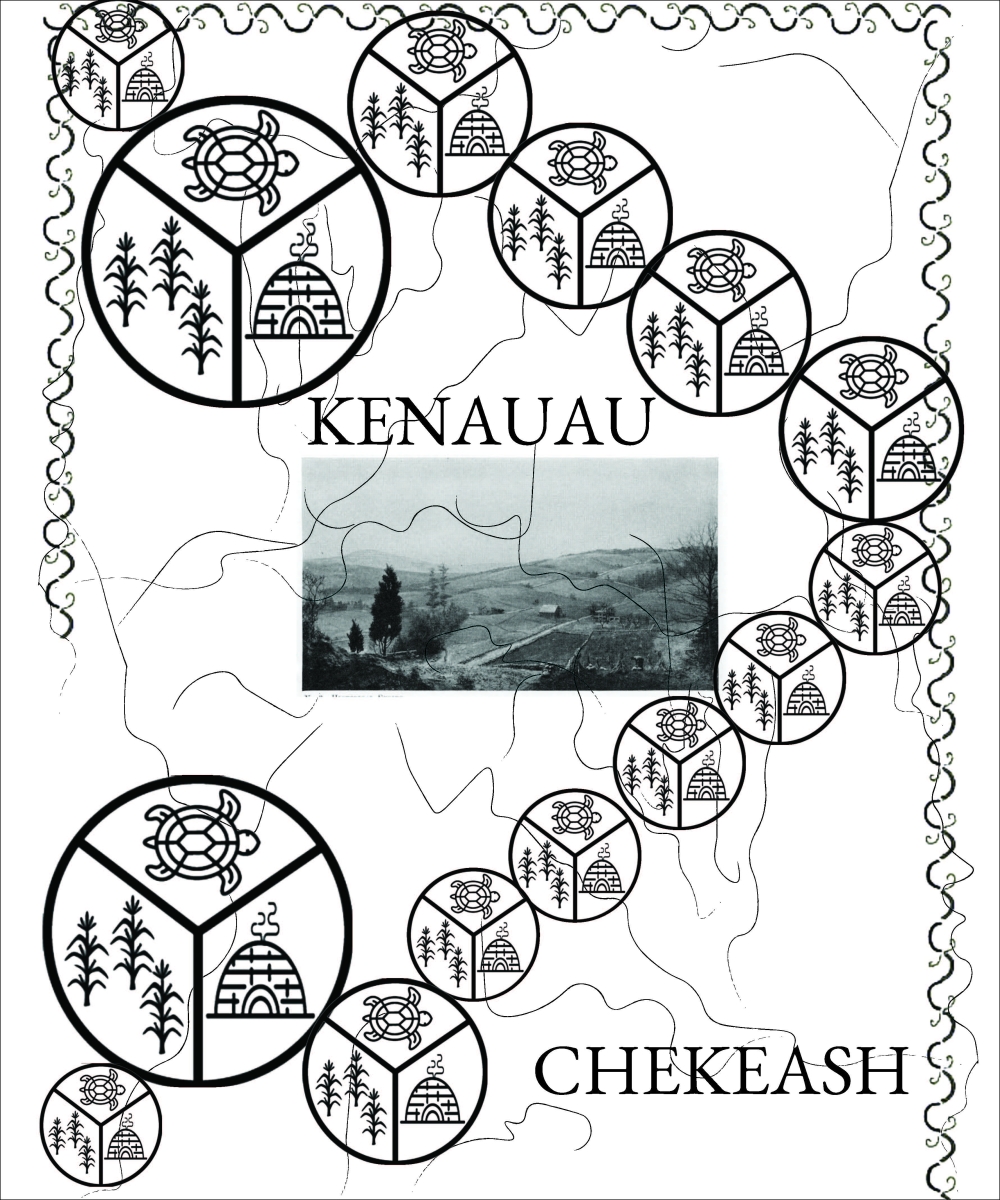
The full images of all trail signs, including screen-reader-friendly text, can be found using the links to each section below:
- Introductory panels 1-4
- Panels 1-3: "What does it mean to walk the trail?"
- Panels 4-6: "What does it mean to be here?"
- Panels 7-9: "What does it mean to take this place with you?"


